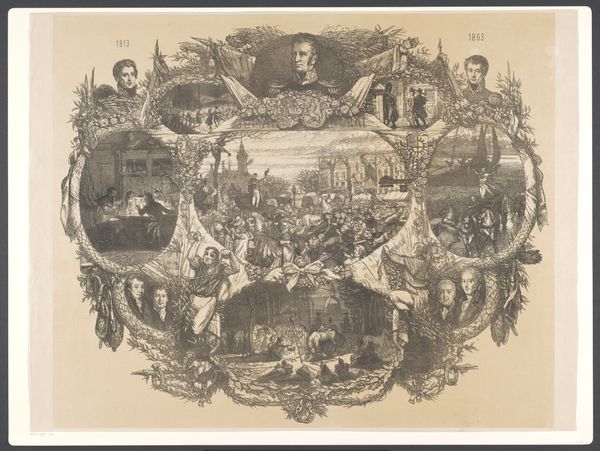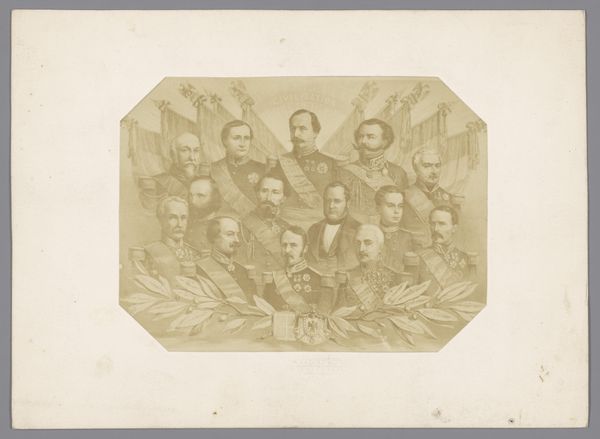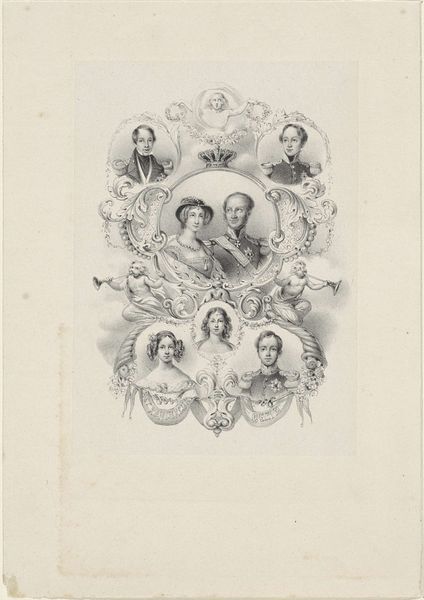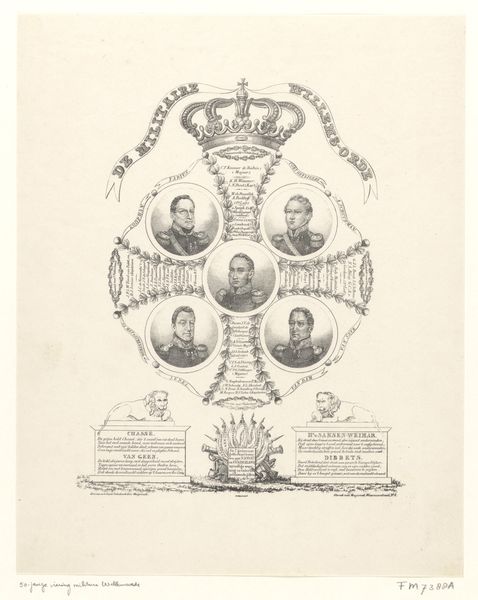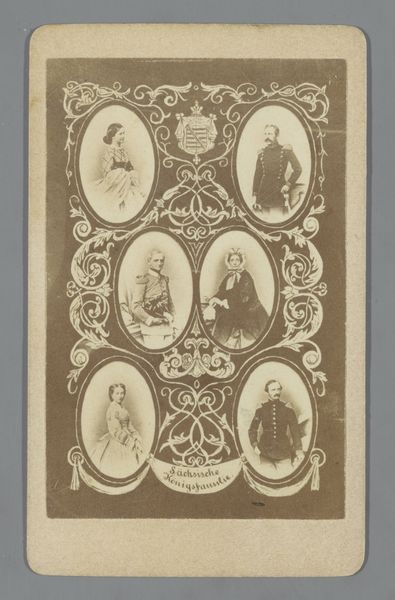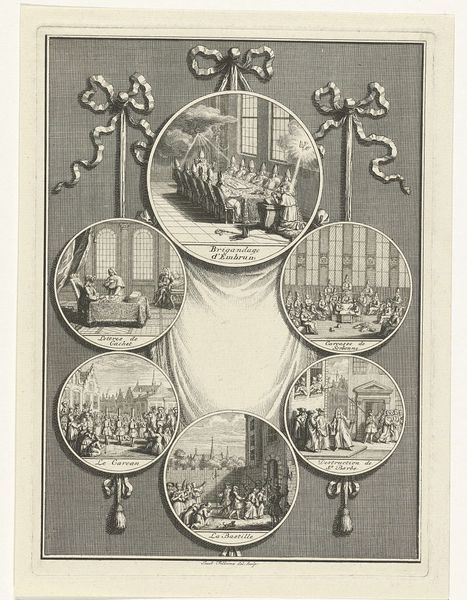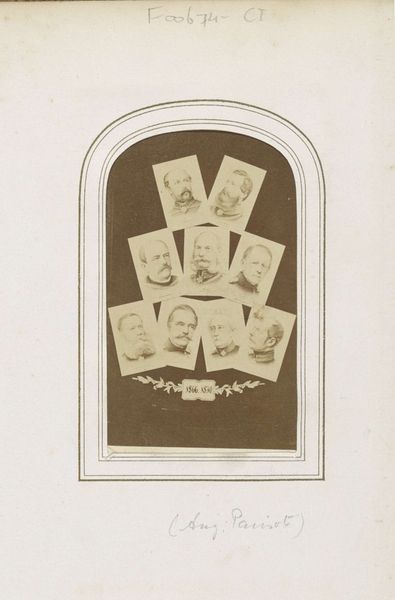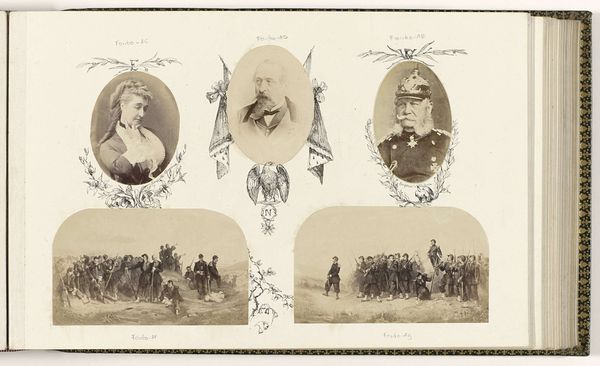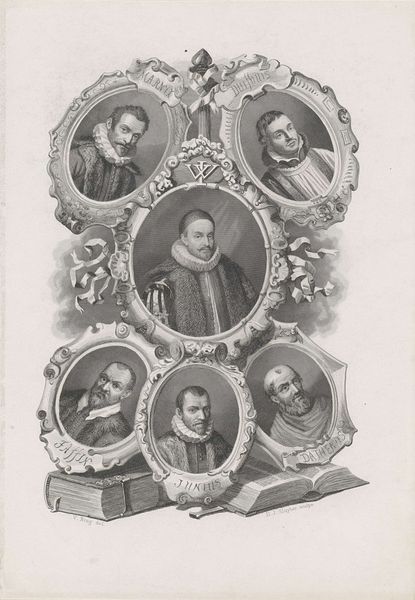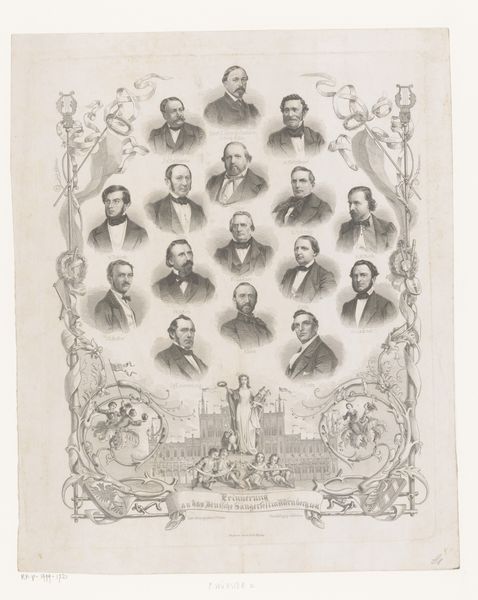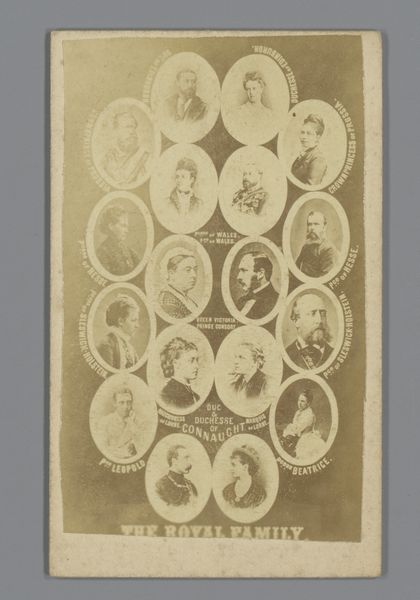
print, engraving
#
portrait
#
narrative-art
#
dutch-golden-age
# print
#
landscape
#
history-painting
#
academic-art
#
engraving
#
realism
Dimensions: height 535 mm, width 400 mm
Copyright: Rijks Museum: Open Domain
Editor: This is a commemorative print from 1874, marking 300 years since the Relief of Leiden in 1574. It’s credited to Christiaan Bos. There’s a lot happening visually, with all these different scenes and portraits combined. How do you interpret this work? Curator: This print operates as a carefully constructed piece of cultural memory. Note the repetition of the portrait motif, anchoring key figures. This visual emphasis performs as an almost ritualistic acknowledgement of their roles in the city’s history and, by extension, Dutch identity. Consider the visual hierarchy: why these specific figures and scenes placed in these specific locations? Editor: I see the central scene depicts what looks like the relief itself. Then the portraits around it... they almost feel like reliquaries, or venerated objects. Curator: Precisely! The artist uses familiar visual tropes associated with power and reverence – the framing devices, the idealized portrayals. It evokes the past, yes, but it’s also actively shaping how the viewer in 1874, and even now, perceives that past. What echoes do you think these images were trying to strike in the viewer? Editor: Patriotism, definitely. And gratitude for the sacrifices made. I hadn’t thought about how consciously these symbols were chosen and arranged. Curator: Indeed, symbols always carry an emotional charge, becoming condensed narratives, triggering cultural memories and consolidating group identity over time. Editor: I am curious; did viewers get all the references 150 years ago? Did people understand it differently from us? Curator: Very likely! Certain symbolic visual details were more immediately recognizable than they are today, further enriched through a shared historical awareness. Now, some visual symbolism requires decoding by later audiences; the images persist in new and revealing ways. Editor: It’s fascinating to think about how art like this shapes our understanding of history, almost solidifying it. Curator: Exactly. It's a powerful testament to how images shape our collective memory.
Comments
No comments
Be the first to comment and join the conversation on the ultimate creative platform.


